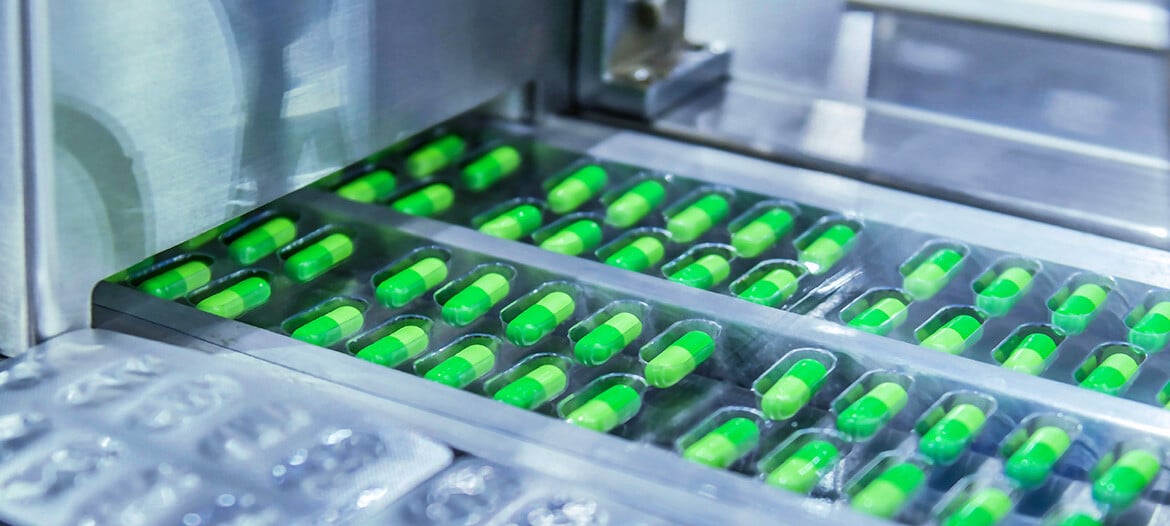Beyond Mapping: Choosing Your Storage Monitoring Points

Marisa Meinero
GDP/GMP Qualification Engineer at ELPRO Messtechnik GmbH
Determining the Optimal Number of Monitoring Sensors in Pharmaceutical Storage
Four Key Takeaways:
-
Optimal sensor quantity depends on product criticality, environmental factors, and mapping results.
-
Over-monitoring increases complexity without guaranteed benefits.
-
Risk-based strategies and documented justification are key for regulatory compliance.
-
Regular review and adjustment of sensor setups ensures long-term monitoring effectiveness.
In the pharmaceutical industry, precise environmental monitoring is crucial for maintaining product quality and regulatory compliance. As summer mapping periods commence, many facilities will determine their temperature mapping results, revealing hot and cold spots within their storage units. The next critical step is implementing a permanent monitoring system – but determining the optimal number of sensors can be a complex decision-making process.
The Challenge of Sensor Optimization
When faced with installing a permanent monitoring system, facility managers often grapple with several questions: How do we determine the right number of sensors? What factors should influence this decision? Is there an industry standard to follow? Should we err on the side of caution and install additional sensors to ensure compliance with client and regulatory requirements?
Unfortunately, there isn't a one-size-fits-all answer to these questions. As with many aspects of pharmaceutical operations, the solution depends on various facility-specific factors.
However, there are several key considerations that can guide facilities toward making informed decisions about sensor placement and quantity.
Key Factors in Sensor Placement Strategy
Product Criticality: The nature and sensitivity of stored products plays a crucial role in determining monitoring requirements. More critical or temperature-sensitive products may necessitate enhanced monitoring coverage to ensure product integrity throughout storage. In addition, depending on the stability data of the stored product, covering hot and cold spots are necessary. It may also be possible that only high or only low deviations are critical to you product. Hence, only hot or only colds spots need to be covered.
Environmental Parameters: Different environmental factors require different monitoring approaches. For instance, relative humidity tends to remain more stable within a closed unit compared to temperature variations. This distinction can influence both the number and placement of sensors needed for effective monitoring.
Internal Environmental Influences: The presence of heat or cold sources within the storage unit significantly impacts sensor requirements. These might include:
-
HVAC vents and returns
-
Equipment generating heat
-
External walls exposed to sunlight (which is also a type of external influence)
-
Door locations and frequency of use
Temperature Mapping Results
Previous mapping studies provide valuable insights for sensor placement. Critical findings to consider include:
-
The number and location of identified hot and cold spots
-
The severity of any temperature deviations
-
Patterns in temperature distribution throughout the space
Spatial Coverage Requirements
Achieving comprehensive coverage of the storage area is essential. This involves strategic sensor placement to monitor all critical zones identified during mapping. It also includes ensuring representative sampling of the entire storage volume. It can also account for vertical and horizontal temperature stratification.
Regulatory Compliance and Industry Guidelines
While determining sensor quantity requires facility-specific analysis, pharmaceutical guidelines provide frameworks for developing compliant monitoring strategies. These guidelines often emphasize:
-
Risk-based approaches to monitoring system design
-
Documentation of placement justification
-
Regular review and optimization of monitoring strategies
-
Validation of monitoring system effectiveness
To prevent a lack of data in the event of a sensor failure, guidelines often recommend to have at least two monitoring sensor available, also for small storage units such as standalone fridges or freezers.
Conclusion
The principle of "as little as possible, as many as needed" should guide sensor deployment decisions. While it might seem safer to install excess sensors, this approach can lead to unnecessary complexity and maintenance overhead. Instead, facilities should focus on developing a well-justified, risk-based monitoring strategy that ensures product quality while maintaining operational efficiency.
The key to success lies in thoroughly analyzing facility-specific factors, understanding regulatory requirements, and implementing a monitoring system that effectively addresses both. Regular review and optimization of the monitoring strategy ensures its continued effectiveness as storage conditions and requirements evolve.
Discussion
What strategies have you implemented in your facility to optimize sensor placement? Share your experience with balancing regulatory compliance, operational efficiency, and cost considerations in your environmental monitoring program.
Feel free to share your challenges and successes in the comments below – your insights could help others in the pharmaceutical industry make more informed decisions about their monitoring systems.







Leave a Comment